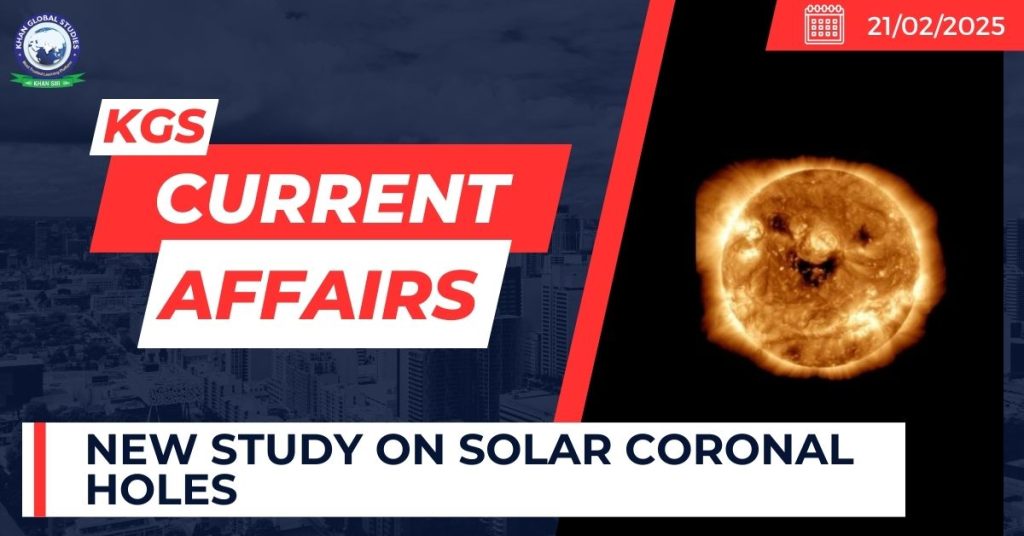Context:.
A new study has estimated the physical parameters of thermal and magnetic field structures of solar coronal holes.
More on the news:
- Astronomers of the Indian Institute of Astrophysics (IIA), an autonomous institute of the Department of Science and Technology carried out this study.
- The study was published in the journal Astronomy and Astrophysics.
About Coronal Holes:
Discovered in the 1970s by X-ray satellites, coronal holes have long been understood to influence space weather, but their relationship with Earth’s climate, particularly the Indian monsoon, has remained a topic of increasing interest.
Coronal holes are dark regions in the Sun’s atmosphere that appear in X-ray and extreme ultraviolet (EUV) images (Invisible to our eyes).

These regions are characterized by low-density plasma and open magnetic field lines having lower temperatures and appearing much darker than their surroundings because they contain less solar material.
They serve as sources of fast solar wind, streams of charged particles that travel from the Sun into interplanetary space.
- These high-speed solar winds, which can travel at speeds ranging from 450 to 800 km per second, can interact with Earth’s magnetic field, leading to geomagnetic disturbances and solar storms.
Key Findings of the study:
One of the most significant findings of the IIA study is the link between coronal holes and space weather phenomena such as geomagnetic storms.
- These storms can lead to disturbances in Earth’s ionosphere, which affects communication systems, navigation technologies, and satellite operations.
Beyond their influence on space weather, coronal holes also appear to have a notable impact on the Indian monsoon rainfall.
- A recent another physics-based study suggests that, in addition to the effects of sunspots, the variability of Indian Monsoon rainfall can be explained by the radiative effects of coronal holes.
Using eight years of full-disk calibrated images from the Solar and Heliospheric Observatory (SOHO) space probe, the team was able to estimate the thermal and magnetic field structures of coronal holes with great accuracy.
In addition to estimating various physical parameters, two key findings stood out:
- No Latitudinal Variation in the Temperature structure of coronal holes. This suggests that coronal holes likely originate from the Sun’s deep interior, where the temperature is relatively uniform.
- Magnetic Field Strength Increases with the Latitude of coronal holes increasing from the solar equator toward the poles. This observation implies that the formation of coronal holes could be related to the superposition of Alfven wave perturbations, which are waves in the solar magnetic field that influence the magnetic structure.
Significance and Impact of the study:
- The study’s findings about the temperature and magnetic field variations in coronal holes contribute to our understanding of their formation processes and the potential long-term impacts on Earth’s atmosphere and climate.
- Their findings provide new insights into the thermal energy input of coronal holes into the interplanetary medium and help in understanding the origins and evolution of these solar phenomena.
- The study offers a comprehensive understanding of how these near-equatorial coronal holes evolve as they traverse the solar disk.

